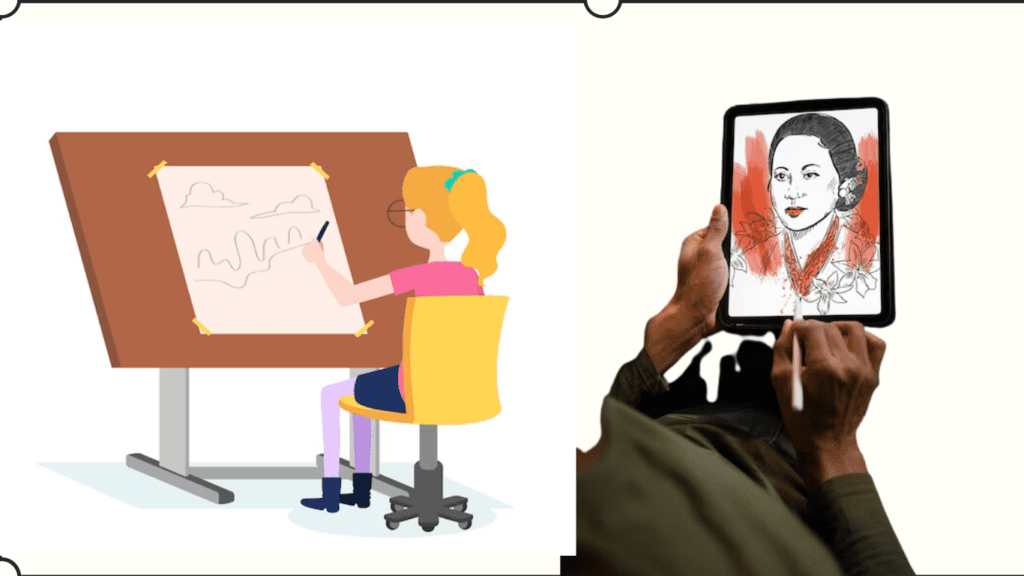In the ever-evolving world of art, technology has played a pivotal role in revolutionizing artistic expression. The fusion of creativity and innovation has given rise to a fascinating genre known as technology-based art. This genre encompasses a wide array of artworks that utilize various technological tools, software, and hardware to create visually captivating and thought-provoking pieces. In this article, we’ll explore 15 exceptional examples of technology-based art that have captivated audiences worldwide.
Examples of technology on the based
Examples of technology on the base of art are givens below,
1. Interactive Installations
Interactive installations involve audience participation, where viewers can engage with the artwork through various inputs like touch, motion, or sound. These installations use sensors and computers to process data and respond to the audience’s interactions, creating a unique and immersive experience.
2. Digital Paintings
Digital paintings are artworks created using digital tools such as drawing tablets, graphic software, and digital brushes. Artists can experiment with different styles, colors, and techniques, pushing the boundaries of traditional painting.

3. Augmented Reality (AR) Art
Augmented Reality art superimposes digital elements onto the physical world, blending the real and virtual realms. Viewers can experience these artworks through smartphones or AR glasses, opening up new dimensions for artistic expression.
4. Virtual Reality (VR) Art
VR Art takes viewers into fully immersive virtual environments where they can experience art from different perspectives. Artists can craft 3D sculptures, landscapes, or interactive experiences that transport viewers to unique virtual realms.
5. Generative Art
Generative art involves using algorithms and code to create artwork. Artists program rules and parameters, allowing the artwork to evolve and generate new forms, colors, or patterns autonomously.
6. 3D Printing Art
3D printing technology has revolutionized the creation of sculptures and physical artworks. Artists can now bring their digital designs into the physical world with various materials and textures.
7. Projection Mapping
Projection mapping uses projectors to display visuals on irregular surfaces like buildings or sculptures. This technology can transform static structures into dynamic canvases, creating mesmerizing visual experiences.
8. Digital Installations
Digital installations incorporate multiple screens, projectors, or LED displays to create immersive and visually stunning environments. Artists can tell compelling stories or convey complex messages through this multi-dimensional medium.
9. Data Visualization Art
Data visualization art transforms complex data sets into visual representations, making data more accessible and engaging. Artists use various charts, graphs, and interactive interfaces to communicate information artistically.
10. Holographic Art
Holographic art creates 3D images that appear to float in space without the need for special glasses. These captivating artworks use light and reflection to achieve their mesmerizing effects.
11. Robotic Art
Robotic art involves using robots as tools or collaborators in the artistic process. Artists can create dynamic and kinetic artworks that move and respond to the environment or the audience’s interactions.
12. Bio Art
Bio art merges biology and technology to create living artworks. Artists work with living organisms or biological materials, exploring themes of life, evolution, and genetic engineering.
13. Motion Graphics
Motion graphics combine animation and graphic design to convey information or tell stories visually. Artists use software to create moving images that can be used in various media, such as films, advertisements, and interactive installations.
14. Internet Art
Internet art, also known as net art, is created and displayed online. It explores the internet’s unique capabilities, incorporating websites, social media platforms, and digital communities into the artwork.
15. Pixel Art
Pixel art is a retro form of digital art that uses small, square-shaped pixels to create images. Artists often work on a small canvas and use limited colors, evoking nostalgia for early video games and computer graphics.
In conclusion, technology-based art has opened up boundless possibilities for artists to push their creativity beyond traditional boundaries. Through interactive installations, VR and AR experiences, data visualization, and more, artists can connect with audiences in new and innovative ways. As technology continues to advance, so will the realm of technology-based art, leading to even more awe-inspiring and groundbreaking creations.

